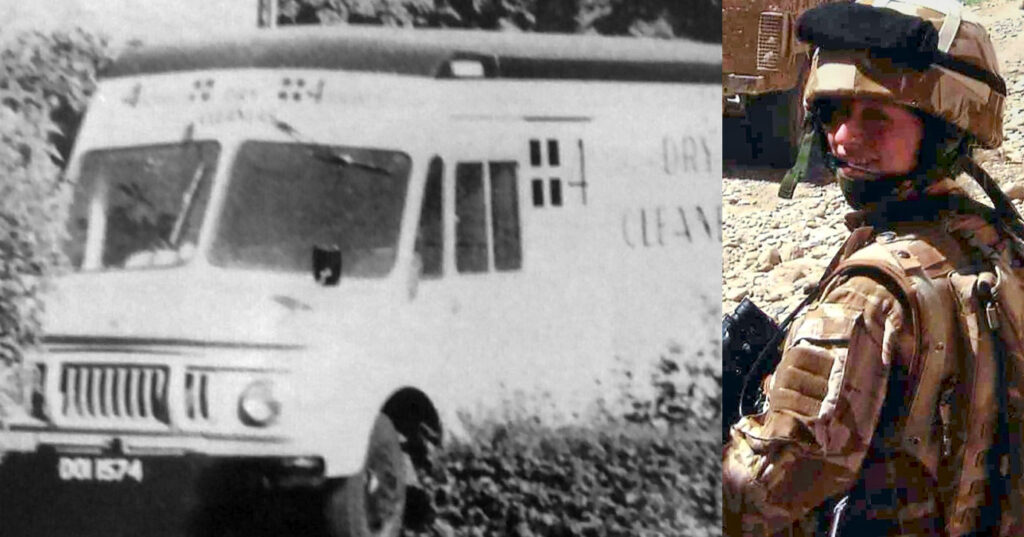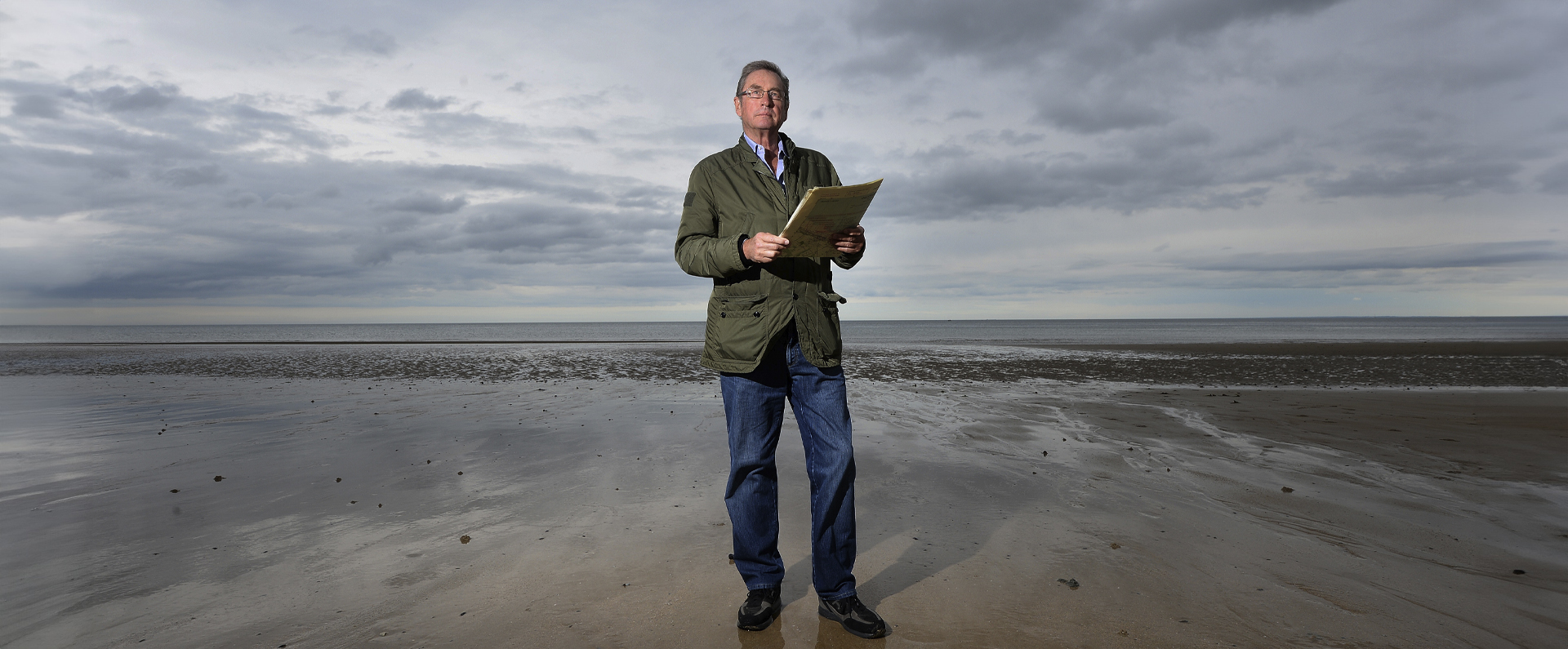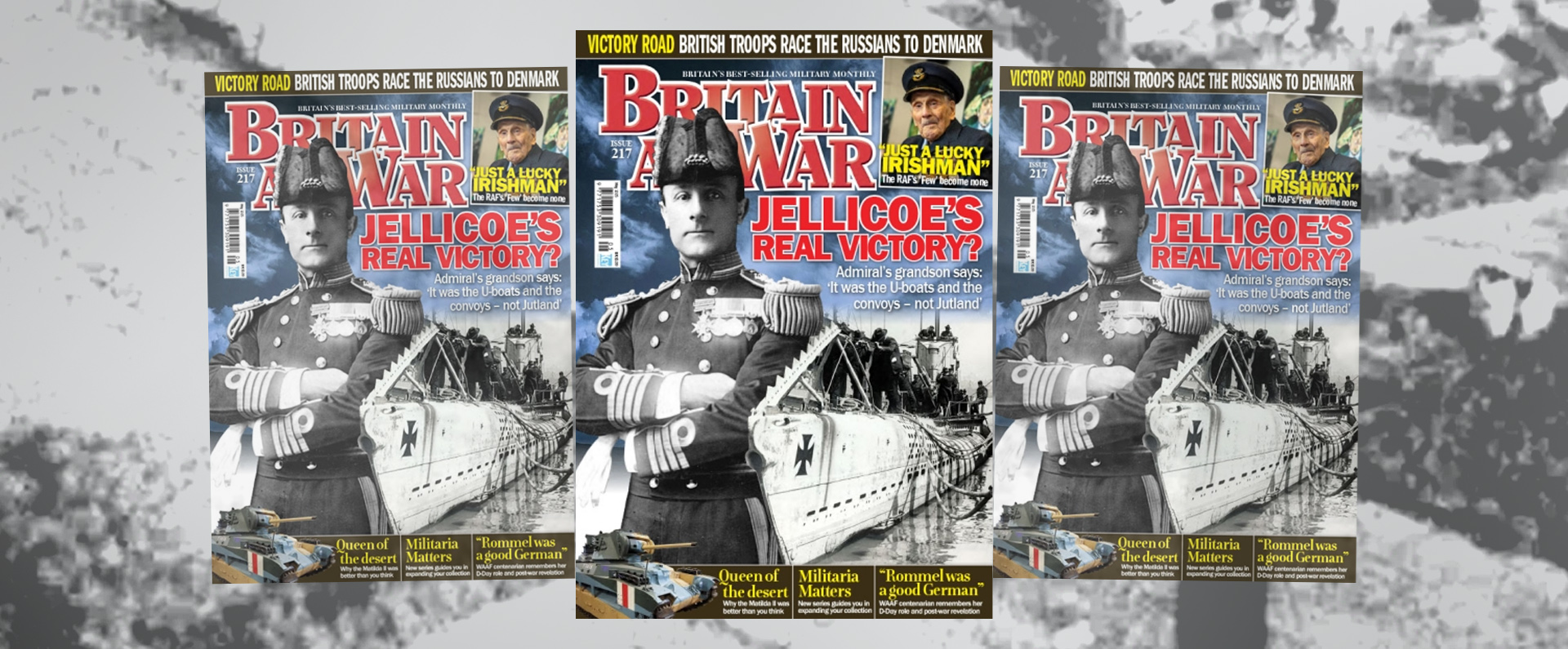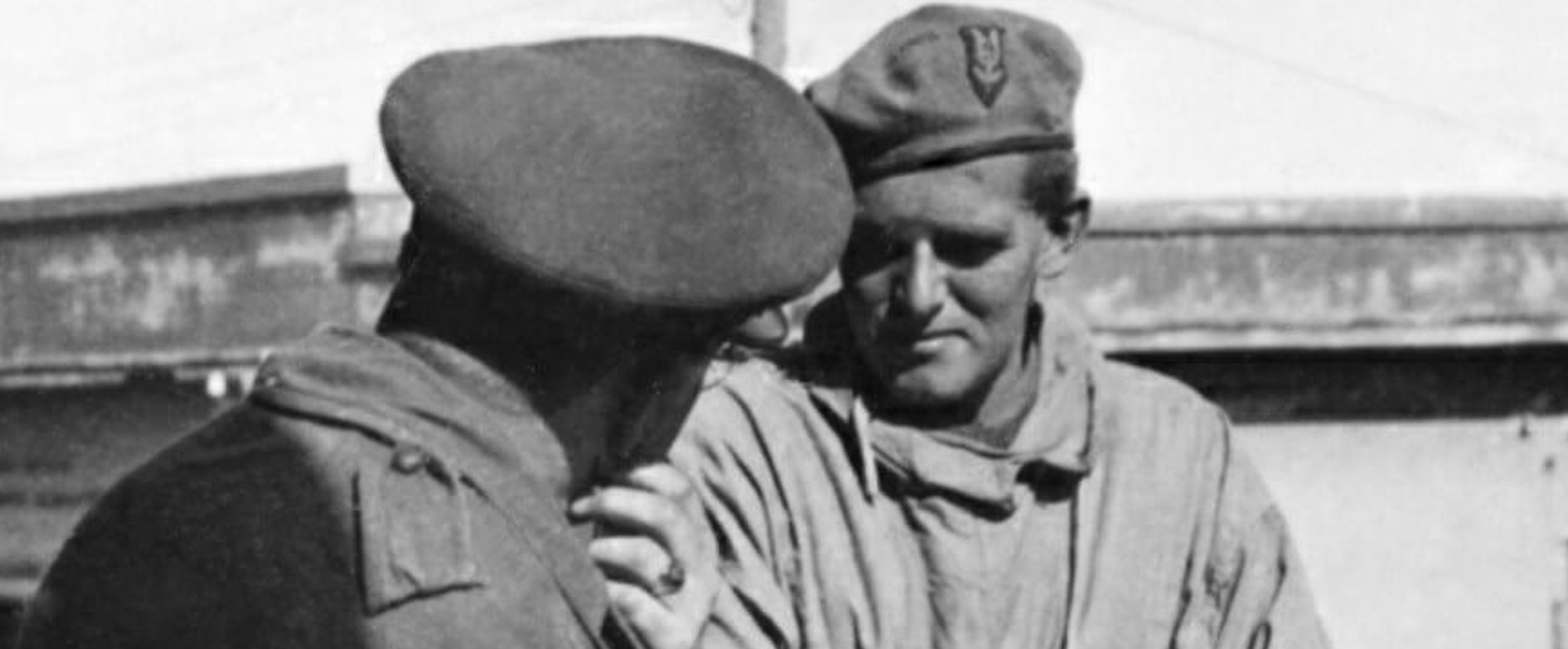
Serialisation in The Daily Mail on 07 November 2022.
For more than a century, men and women in the British Army’s most secretive section, the Intelligence Corps, have pulled off exceptional feats across the world.
But the clandestine nature of their operations means they often don’t get the recognition they deserve.
Since World War II, the Intelligence Corps has deployed on every major campaign and conflict in which British troops have been involved and has developed according to the particular demands placed upon it in each context.
In the Falklands War in 1982, one of the crucial duties of the 30 members of the Intelligence Corps, sent to the South Atlantic with the British task force to wrest back the islands from Argentine forces who had seized them, was interrogation of prisoners.
After an advance raiding party from the Special Boat Service had captured a prisoner, Intelligence Corps officer Nick van der Bijl was helicoptered on to the island with an interpreter. What the paratroopers launching the mission to recapture the islands desperately needed to know was the strength and disposition of the Argentine forces dug in around the strategically important settlement of Goose Green.
Van der Bijl was a veteran of interrogations and had a well-honed technique. ‘It’s all about psychology. Provided you hit the right buttons, you’re halfway there. With decency and kindness, you usually win results, because there is a perception of British fair play, especially from those used to regimes which are prepared to shoot and execute their own people.’
He followed the example of Intelligence Corps interrogator, Colonel Alexander Scotland, who, in World War II, questioned hundreds of German prisoners of war at the so-called London Cage (a clandestine centre in Kensington) and was adamant he did not believe in the use of violence to squeeze information from the enemy.
But van der Bijl knew it was also important to exploit the shock of capture if he was to get someone to talk.
The prisoner was being held in a dimly-lit stable and stood up when Van der Bijl walked in. ‘He looked at me blankly and was clearly anxious.’
Aged 28, the prisoner was stocky with jet-black hair topped by a khaki woollen hat, wearing a grey-green Argentine army jacket and trousers and calf-high boots.
Under his jacket was a British heavy-duty sweater with Royal Marines shoulder tags and a colour sergeant’s rank insignia. In his kitbag was a sleeveless jerkin from Millets, the British outdoor equipment shop. These can only have been purloined from one of the small British garrisons on the Falklands that had been overwhelmed when the Argentines invaded.
He gave his name — Sergeant Rene Martin Colque — and identified his unit, the 25th Infantry Regiment. He said he came from central Argentina, from which van der Bijl concluded he was probably no more used to the extreme cold and damp weather of the Falklands than he was.
‘He was therefore subject to a period of discomfort, unpleasantness and pressure, made worse by the approach of night and a cold and dripping wind.’ But stubbornly, other than name and regiment, the Argentine maintained his silence about military matters — until van der Bijl produced two photos he had found in the prisoner’s pocket. They were of his family.
Colque broke down and reached out for them. Van der Bijl seized the opportunity and told him: ‘You can’t have them back until you tell me what I want to know about Goose Green.’
At this, the floodgates opened. Colque spilled out details of minefields and trenches, withdrawal routes, the sites where reserves were deployed and the organisation of his regiment.
He said he had been in the first infantry unit to come ashore. When questioned about the British equipment in his bag, he said his quartermaster had given it to him.
Van der Bijl challenged him on this, suggesting he had looted it from the Royal Marines at Port Stanley, the Falklands capital, in contravention of the Geneva Convention.
Colque denied this but the implied threat must have loosened his tongue even more as he declared he had little time for his officers and voiced his belief that Argentina would be defeated. He said he had not eaten for two days.
After this first interrogation, he was allowed to sleep and, after a meal, was transferred to a troopship out in Falkland Sound for further questioning. Not long after, he was repatriated to Argentina.
The vital information he had provided was passed by Van der Bijl to the military commanders, and, after a fierce battle, the Argentine defenders of Goose Green surrendered.
It was a turning point in the war. Until then, the British task force had been struggling to get a toehold. Now, it was on the way to victory.
It is fair to assume that the information Van der Bijl had gleaned from his prisoner must have been a factor.
……………………………………………………………………..
The Troubles in Northern Ireland placed huge demands on the Intelligence Corps. At times, a quarter of its available manpower served there. Yet to begin with, the intelligence picture was almost non-existent.
When the first reinforcement operators arrived in 1969, there were only a few dozen names on a card index with the details of IRA men, most of whom were almost drawing their pensions. ‘The intelligence cupboard was empty,’ as one operative put it.
Over the next three decades, the Corps undertook every aspect of intelligence work, from agent-handling and surveillance to imagery and signals, while working in conjunction with Special Branch and the Army.
Prior to Northern Ireland, many in the military — even those at the higher levels of command — had regarded the Corps, its people and its remit with a level of distrust, while others derided the need for intelligence at all.
The Corps’ performance during the period changed all those perceptions and proved the point that no military commander should commence a mission without the good, timely intelligence that embedded members of the Corps could provide. The dangers to which these early special duties operators were exposed are well illustrated by the story of Corporal Robin ‘Roo’ Rencher. A British veteran of the Australian army who had served in Vietnam, he joined the Intelligence Corps in 1971 and was sent to Northern Ireland.
There, he was part of an audacious undercover operation known as the Four Square Laundry. From an ‘office’ in Belfast city centre, this fictional business offered a cut-price door-to-door laundry service in Republican West Belfast. Once collected, dirty clothes and linen were tested for residues of explosives and weapons before being washed and sent back to each customer. If any traces were found, the address the laundry came from would either be raided and searched or placed under surveillance for additional intelligence-gathering.
It worked smoothly for a while. No one in the area took any notice of the laundry’s Bedford Commer delivery van as it cruised around, going about its business. They had no idea that, inside, it was fitted with surveillance equipment and there was a false roof compartment enabling undercover soldiers to take covert photos of targets.
The operation came to a sudden and violent an end in October 1972 after the IRA discovered that two of its members had been recruited by British intelligence. One broke under interrogation and revealed the truth about the Four Square Laundry.
One morning, Rencher was alone in the city centre office when, from the back room, he saw two men enter. He knew straight away they were terrorists and flung himself out through the back door, sprinted down the street and lost himself in the city centre crowds. When the gunmen realised the building was empty, they sprayed it with machine-gun fire and drove off. At exactly the same time, a few miles away in the heavily nationalist Twinbrook estate, the laundry van was parked.
The driver, a Royal Engineers sapper, Ted Stuart, sat at the wheel while the other undercover operator with him, Sara-Jane Warke of the Women’s Royal Army Corps, stood at the front door of a house delivering laundry.
Suddenly, two IRA gunmen appeared and peppered the driver’s side with machine-gun and rifle fire, killing Stuart instantly. Warke survived the ambush only because the woman to whom she was returning the clean laundry believed wrongly that Loyalists rather than the IRA were responsible for the attack and allowed Warke to escape through her house.
Yet, despite the high number of Intelligence Corps men employed in Northern Ireland, and considering the very high element of danger for those employed on special duties, it is remarkable that there was only one fatality of an actual Intelligence Corps member because of direct terrorist action, and that was the result of an unlucky chance encounter rather than a planned operation.
……………………………………………………………………..
The Cold War between the Soviet Union and the West that followed the end of World War II provided a battleground of minds that was meat and drink to the Intelligence Corps, with key surveillance operations conducted behind the Iron Curtain after Britain and the Soviet Union cooperated to set up official military liaison missions to each other’s occupation zones in Europe.
Officials from each country had freedom of movement to travel in each other’s zone of occupation, with certain restrictions. The British mission to the Soviets was known as BRIXMIS and the Soviet mission to the British as SOXMIS.
All this was allegedly in the interests of maintaining good relations but, in reality, these ‘tours’, as they were known, into the other side’s territory were perfect opportunities for intelligence-gathering.
Tours could involve routine monitoring of aeroplanes and trains or they could be a response to specific requests by British military and civilian agencies. Often, this involved collecting evidence on particular Soviet vehicles or new items of equipment.
As the Cold War progressed, and especially after the Soviets completed the wall dividing Berlin in 1961, East Germany became heavily reinforced with advanced Soviet military equipment.
BRIXMIS got into its stride, reporting on troop movements and garrisons, military technological advancements and major structural changes in the landscape. All this would be important means in obtaining advance knowledge of a pending Soviet offensive across the border from East into West Germany.
Some areas in the East were, technically, off-limits to BRIXMIS personnel but often they deliberately flouted the rules by going off-piste to collect vital intelligence.
This put them in danger. Britons suspected of spying were on occasion attacked or even shot at.
The East German secret police, the Stasi, tried to keep the tours under surveillance but generally failed, outwitted by superior British training and determination.
On more than one occasion, specially adapted and strengthened BRIXMIS vehicles with four-wheel drive and upgraded suspension drove at full speed down a railway line to escape a Stasi surveillance vehicle, which was unable to follow. One Corps officer later received a substantial disability pension for mobility problems caused by wear and tear to his spine after carrying out this manoeuvre too many times.
There were some notable intelligence successes. In 1966, a Soviet Yak-28 fighter crashed into Lake Havel in the British-controlled part of Berlin. This was the first time the aircraft had been seen outside the Soviet Union.
For a whole week, while Royal Engineer divers covertly detached the engines and radar from the aircraft, a BRIXMIS officer stalled Soviet officers who had taken up position on the opposite bank. The parts were sent off to London for analysis, then returned underwater to the crash site before being very publicly ‘recovered’ and given back to the Soviets.
In 1983, a quick-thinking non-commissioned officer (NCO) spotted several newly-upgraded Soviet armoured fighting vehicles on a stationary train. He jumped aboard to investigate the calibre of the cannon, and, with no other means of getting an accurate measurement, rammed his lunchtime apple into the muzzle to obtain an imprint and then high-tailed it away.
The apple was later ‘analysed’ and the calibre confirmed as a 30mm.
Some of the work could be pretty dirty.
The long-running Operation Tomahawk involved the systematic secret trawling of rubbish left in Soviet training areas, deployment sites and military installations in East Germany. The detritus of military exercises and garrison rubbish dumps often provided gems of intelligence.
The work sometimes meant handling human excreta. It turned out that Soviet conscripts on exercise used whatever was within reach for lavatory paper — signal message pads, letters from home and technical manuals. When these were recovered, they often provided previously unknown information.
One such find revealed training notes for a new anti-aircraft system. Until then, it wasn’t known if this was a combined gun-and-missile system; the notes confirmed it was, and this had a direct impact in the development of countermeasures. But this undercover work could be dangerous.
BRIXMIS cars — usually Opels or Mercedes G-Wagens — were deliberately rammed by East German trucks, resulting in severe injuries.
Sergeant Bob Thomas was with his team, mapping areas that the Russians had designated as permanently restricted and which probably housed their more sensitive bases and training areas. One day, they got too close and their car was forced off the road by two Stasi motorbikes and then deliberately run over by a truck, which landed on top of it.
Thomas was unconscious in the front passenger seat. The other two crew members were uninjured but severely shocked and bruised. When he eventually came round, Thomas was bleeding heavily and his right leg was bent at an unnatural angle.
He passed out from the pain, and awoke in the back of a moving Soviet ambulance. He was operated on in hospital by surgeons who inserted a plate and rod running from his thigh to his ankle.
During the weeks he was recovering, four uniformed East German police burst into his ward late one night, accompanied by a hospital physician who was a Communist Party member. They started to knock him about until the hospital director arrived and ordered them to leave.
Eventually, he was released from hospital and returned to the West. Two years later, his injured leg gave way when the surgical plate fitted by the Soviet surgeon broke apart. All of its components — plate, screws and rod — were cheap East German copies of the Swiss-made original.
Between 1979 and 1990, BRIXMIS crews were rammed and detained 25 times and there were four shooting incidents, though none fatal.
The French and U.S. missions were not so fortunate. Each had one mission member killed.
The Corps’ work continues all over the world. Intelligence Corps officers and soldiers provided the full spectrum of intelligence-collection activities during the invasion of Afghanistan in 2001 and throughout the subsequent counter-insurgency campaign against the Taliban.
Such was the demand for accurate and timely intelligence that junior NCOs of the Corps, many straight out of training, were deployed at infantry company level as Company Intelligence Support Teams (CoISTs), placing them on the front line of combat operations.
One of these was a young female — referred to here only as ‘Lance Corporal Jenny’ — who served on Operation Herrick 12 between May and October 2010.
‘I had zero operational experience and had been out of training all of six months,’ she recalls, ‘but I was deployed to support the Danish contingent, who were operating out of Forward Operating Base Price in Helmand province.’
Her job was to provide immediate intelligence support and guidance to the company commander in the planning of local operations, targeting and force protection.
‘The only way I could do this effectively and have any chance of obtaining any real intelligence was to go forward with the troops on the ground.’ On her first patrol to a village with known Taliban sympathies, they came under attack.
‘Rounds were coming in from multiple directions,’ she said.
‘Nothing readies you for the whizz-bang you hear and feel when you are really shot at for the first time. Luckily, the training kicked in.’
On a later patrol, she was perched on a rock writing up her notes when she spotted a piece of string beside the road.
It was a command wire leading to an IED (improvised explosive device) consisting of two 107mm rockets buried right next to where she had been sitting.
Between 2006 and 2014, four junior NCOs of the Intelligence Corps were killed while serving in Afghanistan, among them Corporal Sarah Bryant. She was with four other British soldiers on a mission in a Snatch Land Rover that was to take them deep into Taliban territory.
As they passed over a drainage ditch, its rear wheels rolled over an incendiary device which contained 100kg of high explosives. Sitting in the back, Bryant, 26, died instantly, as did three of the others. She was the first British servicewoman to be killed during the war in Afghanistan.
Ironically, her death brought the Intelligence Corps out of the shadows.
Newspapers reported that Bryant was a member of 15 (United Kingdom) Psychological Operations Group based at the Intelligence Corps’ headquarters at Chicksands in Bedfordshire.
Her story was told — how, initially, she had wanted to be a vet, but when an Army careers officer visited her school she became interested in the military.
Having completed her A-levels, she joined the Intelligence Corps aged 18.
She was marked out for a potential commission but insisted on rising through the ranks. On the morning of her death, she had just been told she was being recommended for promotion to sergeant.
Her work was chiefly concerned with ‘influencing’ operations, as her bereaved husband Carl Bryant, who is still in the Intelligence Corps, puts it: ‘A lot of the work Sarah was involved in was proper, old-fashioned hearts-and-minds stuff.’
That description perfectly sums up the distinctive Intelligence Corps ethos and echoes its motto: Manui Dat Cognitio Vires — Knowledge Gives Strength to the Arm.
© Michael Ashcroft, 2022
Abridged extract from In The Shadows, by Michael Ashcroft, published on November 8 by Biteback at £25. To order a copy for £22.50, with free UK delivery, go to mailshop.co.uk/books or call 020 3176 2937 before November 19.



